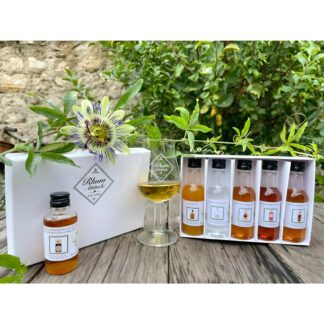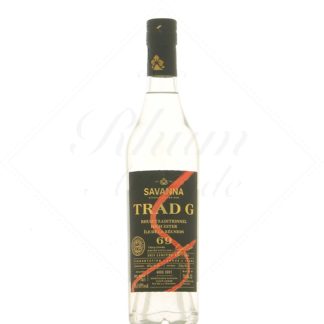Savanna

The Savanna story
The Savanna distillery traces its roots back to the 17th century in Saint-Paul, in the west of Reunion Island. At the foot of the town's mountains lies a pond, and an area called "Parc à Jacques" or "Bout de l'étang". It was later renamed Savanna. Food crops are grown here, mainly rice and sugar cane. There is also a large white house, known as the Grande Maison de Savanna. The distillery has created an eponymous cuvée alluding to this.
The property on which the Maison Blanche was established was bought by a certain Monsieur Lemarchand in the early 19th century. He renamed it "Domaine Sucrier de Savanna". The first distillery was built on the site in the 1870s. The Domaine de Savanna company was founded in 1876.
In 1916, Anatole Hugot and Frédéric de Villèle took over the business. The distillery consisted of seven fermentation vats, two wooden casks and a still. Between 1948 and 1950, Emile Hugot modernized the distillery and enhanced its know-how. His work as an engineer and his numerous publications led him to become president of Sucreries de Bourbon. He held this post from 1948 to 1979, becoming a leading figure in the sugar and rum world.
The first old rums
The first ageing cellar was built in 1964. Then, in 1982, Savanna acquired a modern facility capable of producing light rum. This was in response to strong demand from German customers. The sugar factory closed in 1986. The distillery then became dependent on the Bois-Rouge plant (belonging to the same group) for its molasses supplies.
In 1992, the Savanna distillery was logically transferred to the Bois-Rouge site in Saint-André. The 1990s were a difficult time for rum from Réunion, which suffered from a rather poor image. Laurent Broc, the manager at the time, saw only diversification and a move upmarket as a way out.
Savanna gradually builds up its broad range
It was during this decade that the distillery began research into Grand Arôme rum. Between 1997 and 1999, the methods and recipes used to produce this highly distinctive, high-quality rum were studied. Thierry Grondin, now in charge of research and development, and Laurent Broc, were the driving force behind what would later become the success of the famous Lontan de Savanna.
In 1995, the ageing cellars were also moved to Bois-Rouge. Their capacity tripled in 1999. Like many of the world's distilleries, Savanna then devoted itself exclusively to bulk sales. It did not launch its own brand until 2003. The brand has gone from strength to strength. Numerous styles of rum and a wide variety of different aging options were created. The 2010s saw a great deal of public recognition. Single casks and brut de fûts from the Grands Arômes range are particularly popular.
In 2020, Savanna employs 30 people and can produce 300 hectolitres of rum a day. It operates 24/7 during the sugar campaign, which runs from July to November. Of the 10 million liters of rum produced each year, 2,300,000 liters are stored and/or aged. For this purpose, the cellar master has 1,000 casks and 5 oak tuns at his disposal.
Production of Savanna rum
Savanna's distinctive feature is its ability to produce light molasses rums, traditional molasses rums, agricultural rums and full-flavored rums.
Light rums are only sold in bulk. They are shipped to other rum brands or to liquorists, producers of rhums arrangés etc. They are all made from molasses and have an aromatic congeners level of between 50 and 120 grams per hectoliter of pure alcohol.
Traditional molasses rums, like agricultural rums, have a non-alcoholic content of over 225 g/hlap. Grand-arôme rums contain 800 g/hlap, including 500 g/hlap in esters.
The Sucrerie de Bois-Rouge supplies the distillery with the pure, fresh cane juice and molasses needed to produce its rums. Given the island's steep terrain, 60-70% of the cane is cut by hand by small-scale planters in the surrounding area.
Savanna uses discontinuous fermentation, based on the mother tank process. It has 8 100 m³ fermentation tanks. Since the distillery offers a wide range of rums, the fermentation process is very important, and constitutes the heart of its know-how. Fermentation is different each time, depending on the raw material (molasses or pure juice) and the type of rum required (light, traditional, great aroma).
A variety of distillations
At the end of this stage, the must is between 3.5 and 8% alcohol. Distillation can then take place on a variety of apparatus: a copper Savalle column, a stainless steel column, a copper column, or even a small iron still (for HERR rums).
As the ecological impact of such a distillery is potentially very significant, Savanna has implemented a very interesting technique. After extensive work and studies, it decided to exploit the filtering capacity of the soil. The effluent passes underground, then undergoes purification before being discharged further out to sea. Studies of the surrounding marine environment have even revealed an enrichment of marine biomass and a completely preserved coastline.
Savanna still exports the majority of its production in bulk (80%), for professional customers. The company has one of the largest cellars on Reunion Island, where over 500,000 liters of rum are aged each year.
The majority of the 1000 or so barrels are 400-liter French oak barrels from Limousin or Allier. Numerous finishes are also produced. These include barrels that have previously held Port, Moscatel, Calvados, Sherry or Armagnac.
The Savanna range of rums
Savanna offers an extremely rich range of rums. It is structured around 3 main lines: Intense (traditional molasses rums), Créol (agricultural rums) and Lontan (grand aroma rums). The range also includes white rums, blends of aged rums with a count of age, vintage rums, as well as a large number of single casks, both cask-aged and unaged, with or without finish. Read less
-
-
-
Les Chais Saint Éloi Savanna Rum Grand aroma Brut de barrels 11 years 64°
- Meeting
- 64 ° - 70 cl
1 notice -
-
-
-
-
-
-
-
-
-
-
-
-















